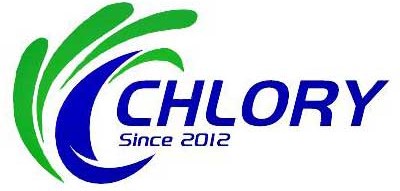Abstract: Salmonella Enteritidis is a common foodborne pathogen that poses a persistent threat to food safety and public health. Traditional disinfection methods suffer from drawbacks such as high residual levels, strong corrosiveness, and environmental unfriendliness. Slightly acidic electrolyzed water (SAEW), as a new, highly effective, and environmentally friendly disinfectant, shows great potential in the food processing and agricultural sectors. This article will explore the bactericidal mechanism and efficacy of slightly acidic electrolyzed water against Salmonella Enteritidis, and highlight the technical advantages of the Chlory hypochlorous acid generator in the stable and convenient production of slightly acidic electrolyzed water.
The Dangers and Disinfection Challenges of Salmonella Enteritidis
Salmonella Enteritidis often contaminates poultry, eggs, and their products. In humans, infection can cause acute gastroenteritis symptoms such as fever, diarrhea, and vomiting. Effective microbial control is essential at every stage of the food processing chain, from raw material cleaning and equipment disinfection to environmental purification. However, commonly used chlorine-containing disinfectant powders (tablets) require manual weighing, which can produce a pungent chlorine odor. Furthermore, the pH during use is high, resulting in a low percentage of effective chlorine (hypochlorous acid, HClO). This results in low disinfection efficiency and can potentially form harmful chloramine residues, which are unsafe for both operators and the environment.
Slightly Acidic Electrolyzed Water: Excellent Bactericidal Properties
Slightly acidic electrolyzed water is a disinfectant produced by electrolyzing a low-concentration sodium chloride (NaCl) solution. Its pH is stable between 5.0 and 6.5, and its effective chlorine concentration (ACC) is typically between 10 and 30 mg/L. Its core bactericidal component is hypochlorous acid (HClO).
Compared to traditional chlorine preparations, slightly acidic electrolyzed water offers significant advantages:
- High Bactericidal Efficiency: In a slightly acidic environment (pH ≈ 6), the chlorine generated by electrolysis exists primarily in the form of hypochlorous acid (HClO) molecules. Hypochlorous acid, a small, neutral molecule, easily penetrates microbial cell membranes, destroying proteins, enzymes, and nucleic acids through oxidation, thereby rapidly killing bacteria, viruses, and fungi. Studies have shown that even very low concentrations of slightly acidic electrolyzed water (e.g., 20 mg/L) can achieve a kill rate of over 99.99% against Salmonella Enteritidis in a short period of time (30-60 seconds).
- Highly Safe: Due to its low effective chlorine concentration, it is far less corrosive than strongly acidic electrolyzed water and traditional high-concentration chlorine preparations, making it safer for equipment materials such as stainless steel and human skin.
- Environmentally Friendly: After reaction, it decomposes into ordinary water, leaving no harmful residues and eliminating the need for secondary rinsing, thus avoiding the environmental contamination of chemical disinfectants.
- Easy to Use: It can be prepared and used immediately, maintaining excellent bactericidal activity without the need for storage and transportation of chemical agents.
Chlory Hypochlorous Acid Generator: The Core of Precise and Stable Preparation
Translating the theoretical advantages of slightly acidic electrolyzed water into practical applications requires high-performance electrolysis equipment. The Chlory hypochlorous acid generator is an advanced device designed for this purpose. Technical Highlights of the Chlory Generator:
- Precise pH Control: Through its advanced electrolytic cell design and intelligent control system, Chlory precisely regulates electrolysis parameters to consistently produce slightly acidic electrolyzed water within a pH range of 5.5-6.5, ensuring a high concentration of hypochlorous acid (HClO) (typically >90%) for optimal sterilization.
- Stable Available Chlorine Output: The device can set and maintain a constant available chlorine concentration (e.g., 15mg/L, 20mg/L, 30mg/L) based on demand, ensuring consistent disinfectant efficacy across batches and eliminating errors that can occur with manual mixing.
- Integrated, Ready-to-Use: Chlory generators typically feature an integrated design. Simply connect to tap water and add a small amount of salt to automatically prepare slightly acidic electrolyzed water with a single click. User-friendly operation eliminates the need for handling the original solution, ensuring easy and safe operation. Ready-to-use disinfectant ensures freshness and maximum activity.
- Intelligent and Efficient: Equipped with automatic backwashing and circulating electrolysis, the device offers easy maintenance, high electrolysis efficiency, and extremely low operating costs.
Application: Building a comprehensive control chain from source to environment.
Combined with a Chlory generator, slightly acidic electrolyzed water can be used in multiple scenarios for the prevention and control of Salmonella Enteritidis:
- Raw Material Washing: Used for washing poultry carcasses after slaughter, disinfecting eggshell surfaces, or washing fruits and vegetables, it effectively reduces the initial bacterial load on raw materials. It is non-toxic and harmless, eliminating the need for concerns about chemical residues.
- Tool and Equipment Disinfection: Disinfect knives, cutting boards, conveyor belts, containers, etc. through spraying or immersion. Its low corrosiveness extends equipment life.
- Environmental and Space Disinfection: A misting system sprays slightly acidic electrolyzed water into workshops, cold storage, and other spaces, disinfecting the air and surfaces through deposition, effectively controlling microbial aerosols in the environment.
- Personnel Hygiene: Used as a hand sanitizer and boot pool disinfectant, it is gentle and non-irritating to the skin while providing highly effective sterilization.
Conclusion
Hypochlorous acid water, with its high efficiency, safety and environmental friendliness, has become an ideal alternative to traditional chlorine-based agents for dealing with intestinal dysentery and Salmonella contamination. The Chlory hypochlorous acid generator successfully solved the "last mile" problem of transforming the slightly acidic electrolyzed water from the laboratory to industrial application by providing a stable, precise and convenient preparation solution. By combining the two, a complete on-site generation and disinfection system was constructed, providing a sustainable microbial control solution for the global food and agricultural product industry, such as Mexico, Spain, the Netherlands, Italy, etc. This has significant practical significance for ensuring food safety and improving public health levels.
